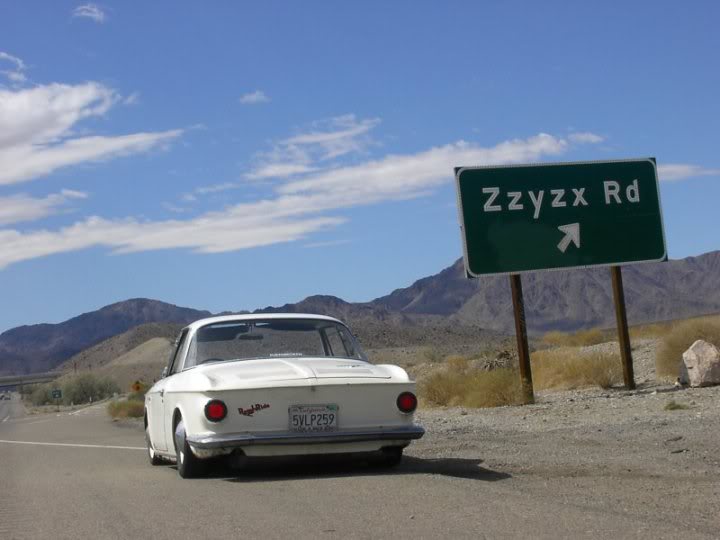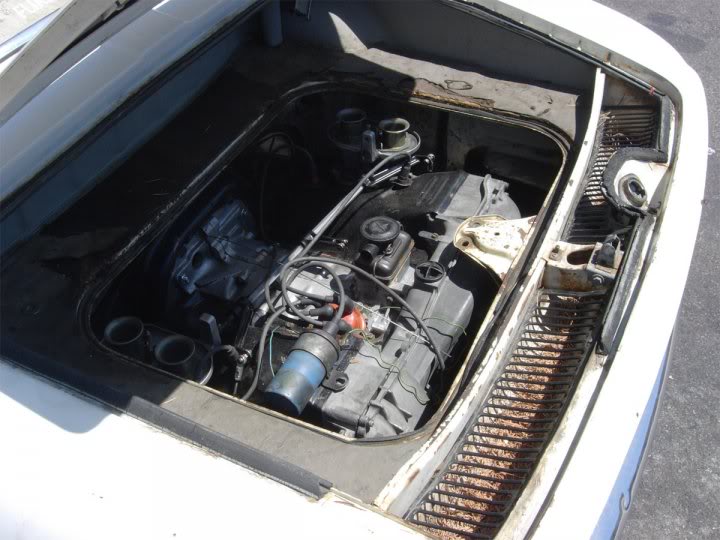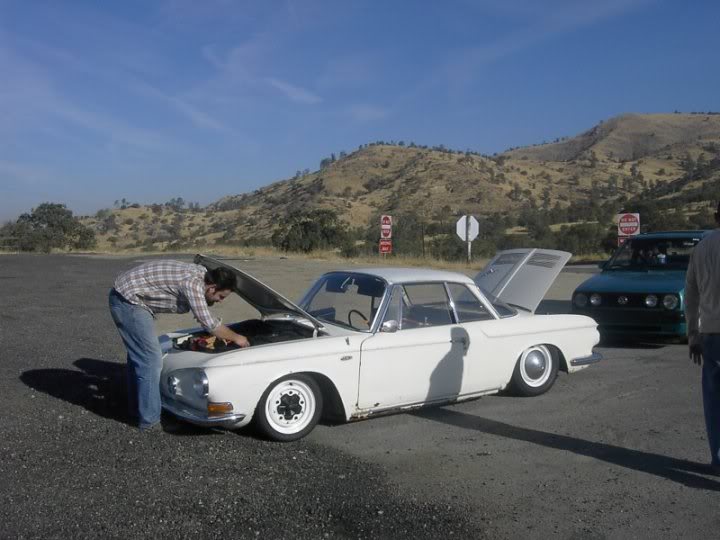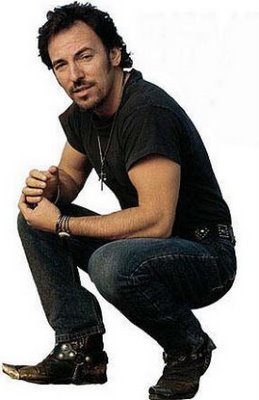I don't know very much about VW engines but I've been under the impression my engine is a Type 4. Am I correct? I looked up the engine code (GD025946) which kinda gets confusing as it's a transplant from the Type 2 bus.
Click to view attachment
Oh and I'll be looking to sell it. Bad history and needs tuning but it runs...probably make a good core. 1976 2.0 but only with 70 or 80 hp. PO says it has Porsche heads - never verified (can check after I pull the engine). Weber carbs. Mallory ignition. Euro racing headers.
Full Version: My engine...Type 4?
Yes it is a type IV engine. If there are three studs in the head where the intake manifolds attach there are Porsche heads. Four bolt heads would be what were used on bus heads..
I looked up the engine code (GD025946)
GD is not a stock 914 engine ...
http://www.914world.com/specs/engnumbs.php
Could he have misread the engine code? GB or GA would be 914 engines.
BTW, the engine info should be corrected as the 916 engine's sizes are mistaken (2.4 and 2.7 are switched).
BTW, the engine info should be corrected as the 916 engine's sizes are mistaken (2.4 and 2.7 are switched).
My thinking on the VW engines....
They had Type 1 cars with type 1 engines (BUGS AND GHIAS).
The type 2 vehicle was the bus and in later years they put a type 4 engine in the bus.
I am alittle fuzzy on the type 3 car (FAST BACKS, SEDANS, WAGONS) but I bet a nickle they put the type 3 engine in that type 3 car. pictures of TIII cars So ugly they are cool!
Sometimes people would put a good engine from a bus in the 914. Logic says that is not the best solution for a non-running 914. The bus is a much heavier vehicle and you may not know how many miles it has on it. Basically saying that even a re-built bus TIV engine will had had a ruffer life. and may not last as long as a rebuilt 914 TIV engine.
You never know for sure. It is in the car now and if it is running, drive it and enjoy.
They had Type 1 cars with type 1 engines (BUGS AND GHIAS).
The type 2 vehicle was the bus and in later years they put a type 4 engine in the bus.
I am alittle fuzzy on the type 3 car (FAST BACKS, SEDANS, WAGONS) but I bet a nickle they put the type 3 engine in that type 3 car. pictures of TIII cars So ugly they are cool!
Sometimes people would put a good engine from a bus in the 914. Logic says that is not the best solution for a non-running 914. The bus is a much heavier vehicle and you may not know how many miles it has on it. Basically saying that even a re-built bus TIV engine will had had a ruffer life. and may not last as long as a rebuilt 914 TIV engine.
You never know for sure. It is in the car now and if it is running, drive it and enjoy.
Bugs and Ghia's, Type 1 engine
Bus, Type 1 engine till 1971 then the type 4 till 1983-1/2 (mid year change to WC)
Type 3, squareback fastback notchback, still a Type 1 engine with a suitcase style cooling system.
Type 4, 411 and 412, type 4 engine
914, type 4 engine.
European market base Vanagon had an oddball type 1 based engine for a while, but most were type 4.
The type 4 engine was developed for the 411/412 cars. The cars failed in the marketplace (they were butt ugly) but the engine was sound. First it was put into the 914 and later into the bus.
Interesting tidbit is VW said the type 4 couldn't be stroked out to 2.0 and still be reliable, Porsche proved them wrong. The bus didn't see a 2.0 in production till 1976.
Bus, Type 1 engine till 1971 then the type 4 till 1983-1/2 (mid year change to WC)
Type 3, squareback fastback notchback, still a Type 1 engine with a suitcase style cooling system.
Type 4, 411 and 412, type 4 engine
914, type 4 engine.
European market base Vanagon had an oddball type 1 based engine for a while, but most were type 4.
The type 4 engine was developed for the 411/412 cars. The cars failed in the marketplace (they were butt ugly) but the engine was sound. First it was put into the 914 and later into the bus.
Interesting tidbit is VW said the type 4 couldn't be stroked out to 2.0 and still be reliable, Porsche proved them wrong. The bus didn't see a 2.0 in production till 1976.
Bugs and Ghia's, Type 1 engine
Bus, Type 1 engine till 1971 then the type 4 till 1983-1/2 (mid year change to WC)
Type 3, squareback fastback notchback, still a Type 1 engine with a suitcase style cooling system.
Type 4, 411 and 412, type 4 engine
914, type 4 engine.
European market base Vanagon had an oddball type 1 based engine for a while, but most were type 4.
The type 4 engine was developed for the 411/412 cars. The cars failed in the marketplace (they were butt ugly) but the engine was sound. First it was put into the 914 and later into the bus.
Interesting tidbit is VW said the type 4 couldn't be stroked out to 2.0 and still be reliable, Porsche proved them wrong. The bus didn't see a 2.0 in production till 1976.
Mark 'Wikipedia' Henry!
I looked up the engine code (GD025946)
GD is not a stock 914 engine ...
http://www.914world.com/specs/engnumbs.php
GD is also the engine code for a 73-75 1.8 L bus engine.
Check to see how many studs are between the intake manifold runners. One stud would mean they are probably Porsche 2.0 heads and two studs means they are probably bus heads.
I think the 73-75 1.8 bus engine was AW. The GD code should be the 2.0 76-77 L solid lifter bus engine, 7.3 compression and a big 67 hp when stock. Won't be fast, but it should be durable.
Are you guys talking about these? I count 4 studs - so bus heads?
Click to view attachment
Click to view attachment.
It is NOT fast at all. Which is why I'm doing a /6 conversion! However it has not given me any problems during ownership - despite having a rough history with a previous owner.
Click to view attachment
Click to view attachment.
QUOTE
Won't be fast, but it should be durable.
It is NOT fast at all. Which is why I'm doing a /6 conversion! However it has not given me any problems during ownership - despite having a rough history with a previous owner.
That's four studs--there are two down in between the intake runner pipes.
If those are "Porsche" heads, they're not two-liter heads.
--DD
If those are "Porsche" heads, they're not two-liter heads.
--DD
Alrighty. Guess I'll be doing some head checking once I get this engine out of my car. Thanks guys!
Bugs and Ghia's, Type 1 engine
Bus, Type 1 engine till 1971 then the type 4 till 1983-1/2 (mid year change to WC)
Type 3, squareback fastback notchback, still a Type 1 engine with a suitcase style cooling system.
Type 4, 411 and 412, type 4 engine
914, type 4 engine.
European market base Vanagon had an oddball type 1 based engine for a while, but most were type 4.
The type 4 engine was developed for the 411/412 cars. The cars failed in the marketplace (they were butt ugly) but the engine was sound. First it was put into the 914 and later into the bus.
Interesting tidbit is VW said the type 4 couldn't be stroked out to 2.0 and still be reliable, Porsche proved them wrong. The bus didn't see a 2.0 in production till 1976.
Which group does the Euro Ghia fit into? There are several of them shown in that link above from Malcolm. Their campy but evidently, highly sough after.
Bugs and Ghia's, Type 1 engine
Bus, Type 1 engine till 1971 then the type 4 till 1983-1/2 (mid year change to WC)
Type 3, squareback fastback notchback, still a Type 1 engine with a suitcase style cooling system.
Type 4, 411 and 412, type 4 engine
914, type 4 engine.
European market base Vanagon had an oddball type 1 based engine for a while, but most were type 4.
The type 4 engine was developed for the 411/412 cars. The cars failed in the marketplace (they were butt ugly) but the engine was sound. First it was put into the 914 and later into the bus.
Interesting tidbit is VW said the type 4 couldn't be stroked out to 2.0 and still be reliable, Porsche proved them wrong. The bus didn't see a 2.0 in production till 1976.
Which group does the Euro Ghia fit into? There are several of them shown in that link above from Malcolm. Their campy but evidently, highly sough after.
The “Euro Ghia” was a Karmann Ghia, which the 914 replaced. It was a Type III.
Bugs and Ghia's, Type 1 engine
Bus, Type 1 engine till 1971 then the type 4 till 1983-1/2 (mid year change to WC)
Type 3, squareback fastback notchback, still a Type 1 engine with a suitcase style cooling system.
Type 4, 411 and 412, type 4 engine
914, type 4 engine.
European market base Vanagon had an oddball type 1 based engine for a while, but most were type 4.
The type 4 engine was developed for the 411/412 cars. The cars failed in the marketplace (they were butt ugly) but the engine was sound. First it was put into the 914 and later into the bus.
Interesting tidbit is VW said the type 4 couldn't be stroked out to 2.0 and still be reliable, Porsche proved them wrong. The bus didn't see a 2.0 in production till 1976.
Which group does the Euro Ghia fit into? There are several of them shown in that link above from Malcolm. Their campy but evidently, highly sough after.
The “Euro Ghia” was a Karmann Ghia, which the 914 replaced. It was a Type III.
So it was basically still a type one engine.
The Karmann Ghia used a bug chassis and the same upright fan shroud beetle engine. The type 34 or "Euro" Ghia was based on the type 3 chassis and used the type 1 engine with the type 3 suitcase cooling system. The type 3 also used dual carbs, not really as a performance upgrade, but to allow a lower profile. The type 3's had a trunk above the engine bay.
If it is a true "Bus" engine, there will be a boss on the driver's side, front bottom of the block for the dipstick tube that has been blocked off with a plate.
Your dipstick is in the correct position for a 914 type 4. The block could have been drilled for the dipstick tube.
Your dipstick is in the correct position for a 914 type 4. The block could have been drilled for the dipstick tube.
Bugs and Ghia's, Type 1 engine
Bus, Type 1 engine till 1971 then the type 4 till 1983-1/2 (mid year change to WC)
Type 3, squareback fastback notchback, still a Type 1 engine with a suitcase style cooling system.
Type 4, 411 and 412, type 4 engine
914, type 4 engine.
European market base Vanagon had an oddball type 1 based engine for a while, but most were type 4.
The type 4 engine was developed for the 411/412 cars. The cars failed in the marketplace (they were butt ugly) but the engine was sound. First it was put into the 914 and later into the bus.
Interesting tidbit is VW said the type 4 couldn't be stroked out to 2.0 and still be reliable, Porsche proved them wrong. The bus didn't see a 2.0 in production till 1976.
Which group does the Euro Ghia fit into? There are several of them shown in that link above from Malcolm. Their campy but evidently, highly sough after.
The “Euro Ghia” was a Karmann Ghia, which the 914 replaced. It was a Type III.
So it was basically still a type one engine.
The Karmann Ghia used a bug chassis and the same upright fan shroud beetle engine. The type 34 or "Euro" Ghia was based on the type 3 chassis and used the type 1 engine with the type 3 suitcase cooling system. The type 3 also used dual carbs, not really as a performance upgrade, but to allow a lower profile. The type 3's had a trunk above the engine bay.
My son's old T34 Ghia, his "HoodRide" scraper on the road to Las Vegas:

With a 1.7 non-stock T4 engine (that we got from Lapuwali):

Trying to find the engine:

If it is a true "Bus" engine, there will be a boss on the driver's side, front bottom of the block for the dipstick tube that has been blocked off with a plate.
Your dipstick is in the correct position for a 914 type 4. The block could have been drilled for the dipstick tube.
What is a boss?
If it is a true "Bus" engine, there will be a boss on the driver's side, front bottom of the block for the dipstick tube that has been blocked off with a plate.
Your dipstick is in the correct position for a 914 type 4. The block could have been drilled for the dipstick tube.
What is a boss?

A flat area on the casting that a hole can be drilled into. Or other stuff can be done to, like stamping the engine serial number.
--DD
--DD
The euro ghia has the funky front. more research must be done. I am going with the idea that it was only sold in Europe??? 
Click to view attachment
The “Euro Ghia” was a Karmann Ghia, which the 914 replaced. It was a Type III.
Click to view attachment
The “Euro Ghia” was a Karmann Ghia, which the 914 replaced. It was a Type III.
They were sold "worldwide", but not in the US. There are a LOT of 'em in So Cal, most of which came down from Canada (much like the Vanagon trucks).
The Cap'n
The Cap'n
The euro ghia has the funky front. more research must be done. I am going with the idea that it was only sold in Europe???
Click to view attachment
The “Euro Ghia” was a Karmann Ghia, which the 914 replaced. It was a Type III.
They were also sold in Canada, history in the beetle (VW) coming to North America Canada was before VWofA in the game.
This is a "lo-fi" version of our main content. To view the full version with more information, formatting and images, please click here.
